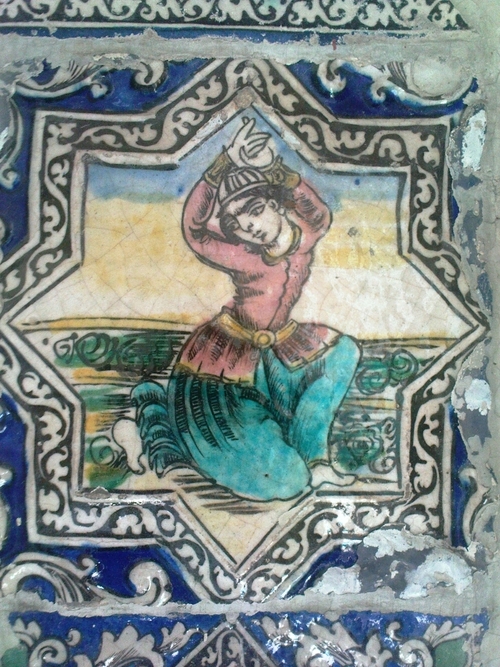Amid the overcrowded Hassan Abad and Imam Khomeini squares of Tehran one will seldom notice the door of a unique museum in Sheikh Hadi Street.
As soon as you set foot on the entrance vestibule of the house, everyday life is left behind; the walls do not allow the noise and commotion to enter the private enclosure of this house now deemed the most valuable in the world.
It came to be known as such in the 50s and 60s when Prof. Pope, the American art historian wrote an article titled Survey of Iranian Arts in Sepid-o-Siah magazine on this unique house and its valuable historical objects.
The house belonged to Mohsen Moqadam the youngest son of Ehtesab-o-al-Molk, the mayor of Naseredin Shah’s reign, Tavoos Art Magazine reported.
First Archaeologists
Mohsen Moqaddam was one of the fist Iranian archaeologists who worked with great specialists of this field at several historical sites. He was the founder of Fine Art College and taught at Tehran University. Together with his French wife, they decided to dedicate their lives to set up a museum of valuable objects on the verge of demolition.
The couple living in Moqaddam’s building decided never to have children. Instead, they considered the historical objects in their house as their children to look after and leave for the next generations.
The house now called Moqaddam Museum was one of the luxurious houses of the Qajar period and has the two sections normally found in ancient Iranian houses, called biruni (public wing) and andaruni (private wing).
Along with all splendid constituent parts of this majestic house, we can see golden tiles of exclusive value. Moqaddam had installed them on the walls for a better preservation. Some of these tiles are absolutely unique in the world.
Textile Collection
Moqaddam’s textile collection is also rare. They are now kept frozen in the complex. Only one of them is publicly displayed within a glass frame.
In addition to all the doors and titled walls of Moqaddam’s gorgeous building, there is a small room next to the basement entrance with all doors and walls decorated with valuable and semi-valuable gems and beautiful corals.
In his journals, Moqaddam has mentioned how he found most of the existing historical objects now on display: by buying them either from vendors or house-owners intending to destroy their historical houses with whatever inside. Others were either being smuggled out or already taken to foreign countries before Moqaddam bought them back with his inherited wealth.
Some other historical objects were given to Moqaddam as gifts by foreign ambassadors or guests.
In this house, there are also artifacts such as red potteries of Cheshmeh Ali dating back to the fifth millennium BC. They are extremely valuable and nobody knows how they have found their way here.
Further studies on the potteries are to be conducted by head office of museums affiliated to Tehran University
Moqaddam bequeathed his family house to Tehran University in 1972 and left this world in 1982. After his death the house was in custodianship of his life-companion until 1990 when she handed it to the University of Tehran. The museum was opened to public in august 2009 after some restorative work.


